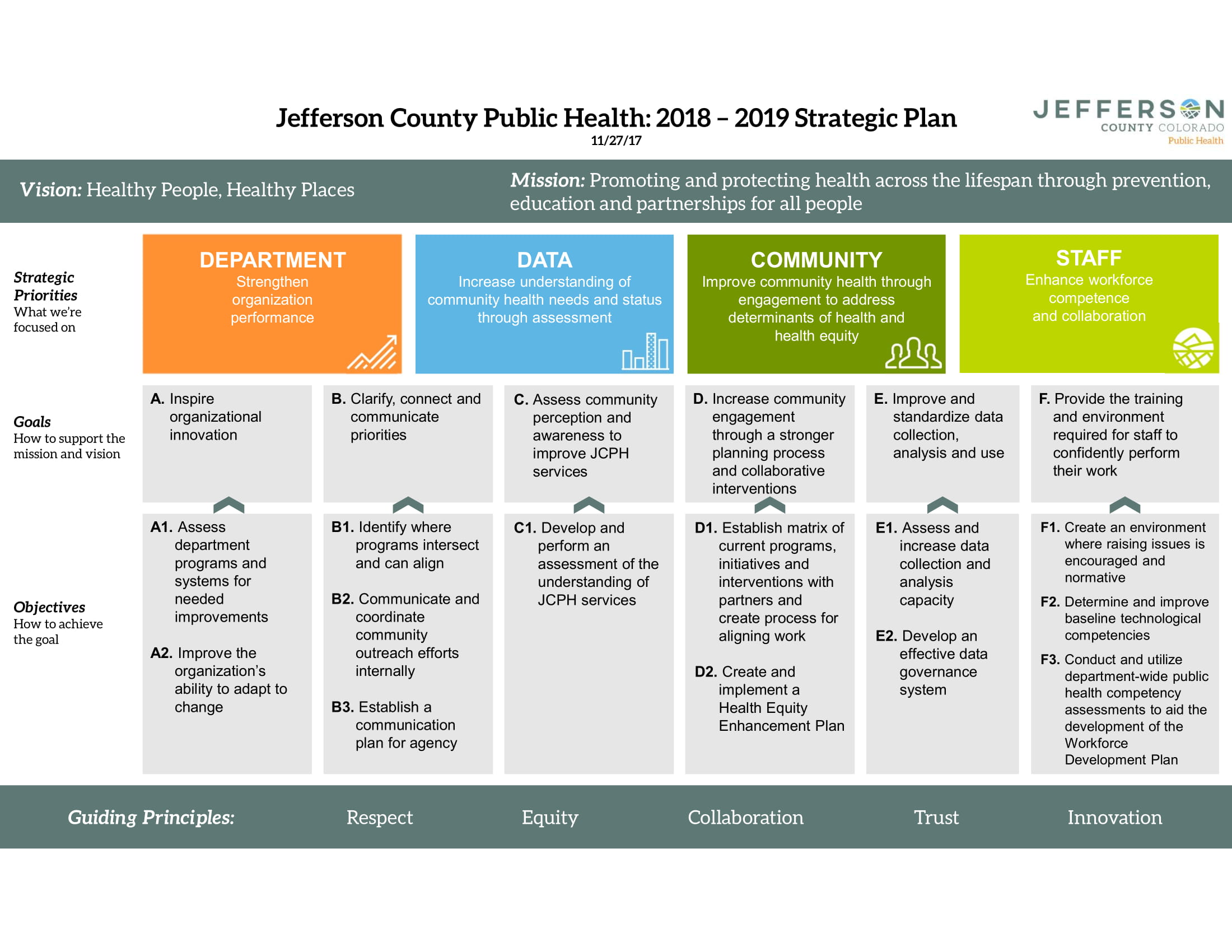By its very nature, strategic planning process feels hard. That’s why entrepreneurs and small business owners avoid it. The purpose of a process is to make things easier to do because you don’t get stuck in trying to figure out what to do next. If you find yourself needing to put a strategic plan in place - this guide will walk you through the process, step-by-step.
What is the Strategic Planning Process?
Let's Define the Strategic Planning Process
More...
According to BusinessDictionary.com:
Strategic Planning is a systematic process of envisioning a desired future and translating this vision into broadly defined goals or objectives and a sequence of steps to achieve them.
Why Do You Need a Strategic Planning Process?

The strategic planning process gives entrepreneurs the choice to succeed down a path of their own choosing.
By its very nature, strategic planning feels hard. That’s why entrepreneurs and small business owners avoid it. The purpose of a process is to make things easier to do because you don’t get stuck in trying to figure out what to do next.
It is easy to get swept up in the day-to-day activities of a small business. When you do, you find yourself reacting, instead of proactively choosing to succeed down a path of your own desires. As the saying goes, most people don't plan to fail, they just fail to plan.
Check out this Ultimate Guide to Strategic Planning for #smallbiz!
What Can a Strategic Plan Do for You?
A lack of a strategic plan will waste your time, your money, and your motivation to keep going. Having a strategic plan will do three things:
Strategic Planning Models To Use
There are several models of strategic planning. The key is finding which strategic planning model fits the best for you and your team. Try one this year and if it doesn’t feel like the best fit, try another one next year. Here are just a few types of strategic planning models.
Strategic Planning Model #1 - The Balance Score Card
A variation of the one page business plan template, this is a succinct strategic planning model. Here are a few examples:
Strategic Planning Model #2 - Goals/Objectives/Strategies and Tactics
This is a classic strategic planning model. Although I shy away from using it because teams can get sidetracked if they worry more about defining the words objectives and strategies than they are about completing a plan. If you like this strategic planning model, there is a great website that can help you develop clear objectives, www.okrexamples.co .
Strategic Planning Model #3 - The Theory of Change
This is a very scientific process that may work well if you have an engineering type mind. The strategic planning process of the Theory of Change starts with reverse engineering a long term goal. The process requires you to walk backwards through what is necessary in order to complete your goal, This may be perfect if innovation is required as an evolution of your small business and you need to construct new pathways to your goal.
More ToC examples can be found at www.theoryofchange.org .

Strategic Planning Tools
Once you have your framework, there are a few tools and techniques that can make the process easy and consistent. I find that when I lead teams in strategic planning, we tend to use a combination of these strategic planning tools:
SMART Goals
A way of defining what you want to achieve in a manner that is Specific, Measurable, Attainable, Relevant and Timeline driven
SWOT Analysis
A way of giving framework to the strategic planning process by evaluating the company's' Strengths, Weaknesses, Opportunities and Threats.
Porters 5 Forces
A framework of assessing the industry in terms of competition (1), new entrants (2), suppliers (3) customers (4) and threat of substitute products (5)
Visioning
A way of imagining where will you be in 10 years, five years, or one year? Visioning is valuable because it can define the why behind your business.
Sticky Notes - The Post-It App
Where has this been? I love planning with Post-Its. There is a special permission to adjust and fluidity to the process when you use them. This app will help you go from post it to document with a push of a button. All you need is a blank wall, some Post-Its and this app.
Who Do You Involve in Strategic Planning Process?
Many hands make light work. You are likely to get more buy-in and more momentum behind your goals when you have people involved in the strategic planning process.
For my clients with 15 or fewer employees, the answer to ‘who’ is everyone. However, in some businesses, it is logistically impossible to have everyone involved in the process. If you are running as a sole proprietor, include the other partners or sub-contractors who help you get the work of the business done.
Also, think a little outside of the box when you consider who you want to bring to the table. People who think differently, people who challenge the status quo, and people who balance out your team (or your own personality) can bring value to the process.
For your team, set a few house rules about the planning process and expectations. These rules should allow the team to ask questions, challenge assumptions, and give freedom to offer up innovative solutions to the challenges you have in your business.
Interested in having Leslie consult with your company?
Send us a request for more information and we'll be in touch soon
Steps to the Strategic Planning Process
You have your model and your tools; let’s define the strategic planning steps.
Strategic Planning Step 1 – Get Your Team on the Same Page
Your Small Businesses' Mission, Vision, Purpose and Values
The Mission, Vision, Purpose, and Values of your small business is the character or soul of your business. The Mission, Vision, and Purpose is your MVP, think “most valuable player.” Values are the characteristics that have priority within the structure of your MVP. When combined, mission, vision, purpose, and values define your culture and how your small business shows up in the world.
While helpful to the strategic planning process, I don’t prefer the development of mission, vision, purpose, and values a part of the strategic planning process. Primarily this is because defining these elements should be given the time and focus it deserves. If strategic planning is new to your team, trying to determine these elements now complicates the process. If you do not have these items defined, include the development of your mission, vision, purpose, and values as an action item on your strategic plan.
The purpose of having you MVPs defined for the planning process is to help center and refocus the planning team. This focus gives a container for everything that will be discussed and ultimately added to the strategic plan.Strategic Planning Step 2 – Where Have You Been, Where Are You going
The second step in the strategic planning process involves looking behind and looking forward. The first step is to conduct is a Business Audit; this is the homework before the strategic planning meeting. The business audit reviews the performance and the trends of the business. It helps to identify where money is leaking, where money is being left on the table, and where the opportunities are to create cash.
The following areas are starting points, and can serve as a framework to your audit, they include:
Strategic Focus: Financial & Fiscal
Good business is good math. If the math of the business doesn’t work, then the business won’t work either. When you look at the financial health of the business, you are looking beyond sales or revenue. In this area, we review:
What is 'Days Cash on Hand'?
This is a financial metric that large corporations know to pay attention to, but most small business owners ignore. It is important to know because it tells you how healthy your cash position is in your business. And as the saying goes, Revenue is Vanity, Profit is Sanity, but Cash is Queen. Here is how to determine your cash on hand.
Most small business owners find that they are operating their business on 9 to 12 days worth of cash, when you likely need to be operating on 90 to 120 days worth of cash. The difference between the two situations is astounding. If you find yourself less than 90 to 120 days; make sure to include improving your cash position on your strategic plan..
Strategic Focus: Customers (Marketing, Sales, Product)
Your customers are critical to the continued growth of your small business. In this area, we review:
Strategic Focus: Internal (Operations, Systems, Processes)
As you grow and scale your small business, the ability to be productive with your team will come down to how easy it is to get the work done. The operational area that will require specialized KPIs, consider some of these questions in the process:
Strategic Focus: Team (HR, Hierarchy, Hiring)
The single largest line item for every service-based business is payroll, or professional services. People are the key to your scalability, but business owners don’t often see this area as a strategic focus. When thinking about the team, consider these questions:
Strategic Focus: Plus, Delta, Low Hanging Fruit
Based on all the findings and the goals you have for the business:
Strategic Focus: Change the World
Our world is changing at a fast and furious rate. Industries are shifting and disrupting every day. The way things were in the past is not the way things will be in the future. To be relevant and profitable in your small business, you must look for ways to innovate. The challenge is to use the rate of change to your advantage. It is too easy to get started down this road and get locked into complaining about the way things were.
For example, a CPA firm was expressing their frustration around hiring millennials who were willing to work 80 hours a week. They continued to express their frustration, mentioning that the problem was ‘millennials.’ My observation is that society’s expectations around quality of life have changed, yet the business has not evolved with that expectation.
In the ‘Change the World’ framework, the firm would be better served to ask themselves this question:
What would disrupt your business enough to change everything? How can you be on the leading edge of that change? If that is not a path you desire, where does the business need to go to be relevant and profitable in five years or even ten years from now?
Strategic Planning Step 3 – Determine Your Business Strategy
You have a lot of raw materials for your business’s strategic plan. Now it is time to sift and sort, prioritize and plot your plan for 2020. The next step is all about the vision and the mix of strategies to help you achieve that vision.
Strategic Focus: Determine Your Single BHAG for 2020
You need one BHAG (Big Hairy Audacious Goal) to define your year. What is that goal? I prefer to see a goal that is SMART and revenue or growth-focused. Define what that would be and make sure that it holds a certain level of nervous-citment (50% nervousness, 50% excitement).
Strategic Focus: Determine Your Core Strategic Planning Initiatives
What are the strategic initiatives across these core business areas that support and make your BHAG possible? Define one to two critical actions per area:
Strategic Focus: Determine Your Strategic Plan Mix
Here’s the part of the strategic planning process that can make or break the results you can achieve. The two biggest pitfalls are:
You need the right mix of strategies. The combination should give you and your team some quick wins while allowing for results to occur throughout the year and compound on each other. Based on two factors, the size of your team and your cash position, use this matrix to determine your strategic planning mix.

Strategic Planning Step 4 – Prioritize and Timeline
Create Your One Page Business Plan
The value of a one-page strategic plan is that it forces you to communicate where the business is headed. The term ‘one-page’ is open to interpretation. One page could be a standard 8.5” x 11” paper, and it could be 11”x17” paper – chose what works best for your business. Here is a basic layout that you can do in excel or word that you can adapt.

Create a Timeline for Implementation
As much as you would love to, you cannot accomplish your plan in the next 30 days. As you look at the strategies developed by you and your team, it is time to prioritize the strategies and give structure to them.

One of the most effective ways of timelining strategies is to utilize the 90-day planning timeframe. Map out on a paper, or with sticky notes, four columns – one for each of the quarters in 2020 (QTR1, QTR2, QTR3 and QTR4). As you look to lay out your goals, consider the following:
First Things First
Which strategies predicate other strategies?
Power of Impact:
Which strategies can make a significant impact?
Tiny but Mighty
Which strategies give us a quick win?
Change the World
Which strategies can change our world?
Did some of the strategies not make the cut? Don’t worry. You don’t need to abandon them. They get placed onto the ‘Good Idea’ list. You’ll reconsider them at your next quarterly planning session.
Create a Focus for the Next 90 Days
Here is where small businesses need to deviate from how large companies tackle strategic planning. As a small business, you can move faster than others. For this reason, only address the next 90 days or quarter for implementation.
This method of planning is more iterative, allows the focus you need to achieve results, and keeps you fluid and flexible enough to pivot.
Looking at the upcoming quarter:
Staying Motivated to see the Strategic Plan Generate Results
Focus and dedication are crucial to seeing the strategies through to completion. Determine what a win looks like, and how you will recognize and celebrate that win. Accountability also plays a part in staying the course while implementing your strategic plan. Do you need someone to hold you accountable? How will you keep your team accountable for their roles?
Often accountability can be as simple as having to give updates, because no one likes to say that there are no updates. At times, though, there needs to be to help you see and remove the resistance to getting things done.
Tracking, reporting and rewarding will go a long way in staying motivated during the next 90 days.
Strategic Planning Step 5 – Compounding the Results
Evaluating Your Strategic Planning Progress
Tracking anything in your business can feel tedious, but knowledge is power. If you track your progress monthly, you are going to know whether you are making headway. You will be able to incorporate learnings faster and make necessary pivots. You’ll also be able to avoid the “stopping six inches from gold” trap and know when it’s time to stop backing an initiative.
The idea behind consistent tracking is to have data to make strategic decisions on moving forward.
Adopt a 90-Day Strategic Planning Cycle
Two weeks before the start of the next quarter, you and your team will need to come back to the table to report on their progress and look at the next quarter of initiatives.
You will go through the same steps as before, but it will be quicker and more efficient the more times the team goes through the strategic planning process. Take the time to evaluate the priorities you set at the annual planning session, feel free to pivot as new learnings and knowledge have revealed itself.
Leslie Hassler
Leslie Hassler is a dynamic author, speaker, and business strategist guiding women owned, service-based businesses into more profits, cash flow, and success. Business owners come to Leslie seeking a way to strategically scale their businesses richly, stop the money leaks, and get back in control with confidence.
Using her more than 12 years of experience in business, finance, mindset, and more, Leslie takes multiple 6 and 7 figure businesses from cash-strapped and struggling to profitable and thriving with her unique Scaling Rich™ Method.
Her genius has also been featured on stages around the United States such as the National Association of Women Business Owners, the Women’s Business Enterprise National Council, and more.









